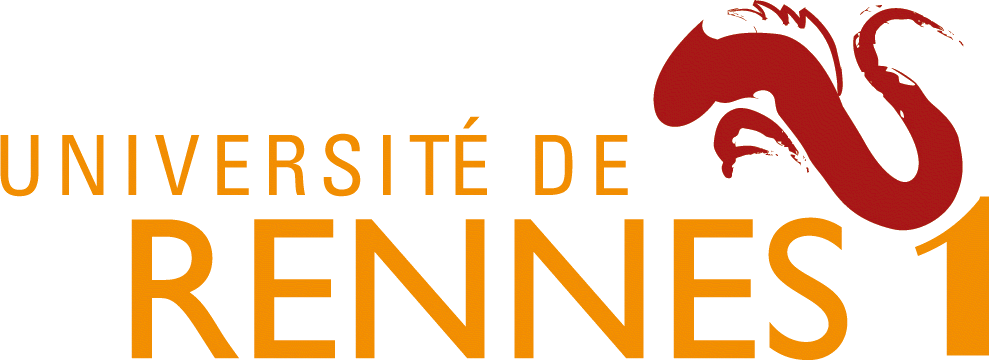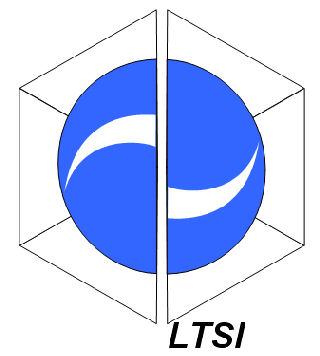News
Members
Publications
Software / Data
Job offers
Images / Videos
Collaborations
Conferences
Lab meetings: "Les partages de midi"
Practical information
Members Area
Next conferences we are in …


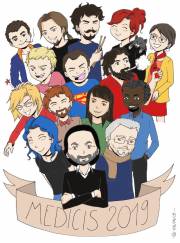
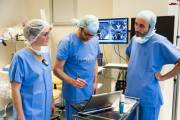
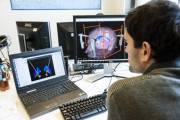
This is an old revision of the document!
| French Coordinator | International Coordinator | |
|---|---|---|
| Name | Christian Barillot | D. Louis collins |
| Position | Research Director | Associated Professor |
| Research Institute | CNRS / INRIA / Inserm VisAGeS Unit U746 | Montreal Neurological Institute, Univ. Mc Gill / McConnell Brain Imaging Centre / Image Processing Laboratory |
| Address | IRISA, Campus de Beaulieu, 35042 Rennes, France | McConnell Brain Imaging Center, MNI, 3801 University St., Montreal, Quebec. H3A 2B4, Canada |
| Website | http://www.irisa.fr/visages/barillot | http://www.bic.mni.mcgill.ca/users/louis/ |
| Phone | +33 2 99 84 75 05 | +1 514 398 4227 |
| Fax | +33 2 99 84 71 71 | +1 514 398 8948 |
| Christian.Barillot@irisa.fr | louis@bic.mni.mcgill.ca |
The goal of this INRIA associated team is to combine the respective research efforts we have recently conducted between the VisAGeS and IPL teams, and thus benefit from the resulting cross-fertilization in order to prolong the efforts which just start to give significant deliverables. We aim at addressing specific aspects of medical image processing for the purpose of neurological disease analysis and their treatment through surgery. Both teams have now significant experience in developing together research tools or experimental framework aiming at:
For seek of concision we don’t propose to prolong the quite successful work we have jointly done in the context of study pathological brain structures via computational anatomy on Appearance-based and cortical geometry-based classification of brain anatomy in the context of dementia and Parkinsonian disorders.
Through this project, the two teams wants to share their own, but complementary, expertise by distributing algorithms and data (especially validation framework) dealing within the clinical needs described above, in order to compare and cross-validate the different procedures developed at each site or elsewhere; then improve on the excellence and efficiency the procedures developed on each site. This workbench will be first tested in the context of three main neurological applications:
At present, neuronavigation systems are widely used to assist neurosurgeons during their operations. Similar to a GPS system, the neuronavigation system gives the position of the surgical tools in the preoperative images, which can be considered as the map. In this way, in real time, the neurosurgeon knows the position of the target (e.g. tumor) and the path to follow (i.e. preoperative planning). However, after the opening of the skull, the soft cerebral structures move, and thus the map used by the neuronavigation system (i.e. the preoperative images) becomes inaccurate and obsolete. In order to overcome this limitation, we will work on the development and the validation of automatic method to compensate for the “brain shift” based on freehand ultrasound imaging.
We investigate in this project how “brain shift” can be compensated based on the movement detection of vascular (vessels [1-2]) and anatomic (lesion, sulcus and cerebral falx [3-5]) landmarks. Both team share a complementary expertise in this field. We will also investigate how these intraoperative imaging procedures can be validated from surgical procedures performed at the two sites. Since developing new tools for brain shift compensation has no sense if we cannot quantify the added value of this procedure, we propose to set up a joint validation framework between methods developed at the Montreal Neurological Institute (MNI) and at the Pontchaillou Hospital of Rennes (with the Visages Team). The contribution of this topic can be summarized as this: automatic compensation of the “brain shift” will open the way for a new generation of neuronavigation systems. Moreover, the automatic detection of the residual tissues will improve the treat and will optimize the surgical procedure. This project has a real potential in terms of clinical application and knowledge transfer.
One additional objective will be to work jointly on the development of software platform components in IGNS in order to increase the disseminatation capabilities of the ODL VIGNES project in Rennes and its correspondent at MNI, this will be done through the IGSTK development forum.
Over the years, the Montreal Neurological Institute (MNI) has established a large collection of longitudinal, multi-sequence of MRI data of patients with Multiple Sclerosis (MS). It also developed automated image processing methods and pipelines to analyze these large MRI datasets and compute markers related to MS, such as the lesion volume and number [9] and global brain atrophy [6, 10]. At IRISA, we developed new methods to detect and measure MRI intensity changes over time using series of multi-sequence MR images, and lesion changes have been linked with the disease progression in MS [6-8, 11-13]. A longitudinal approach to measure brain changes, in focal or diffuse lesion, opens a new window to detect and quantify MS lesion biomarkers in specific brain areas, such as the white matter or the grey matter, but also its intensity distribution. With this kind of approach in combination with algorithms of the MNI on their extensive databases, we expect to study the spatiotemporal evolution of brain region signatures and to validate our respective automatic [9, 12] and supervised [13] segmentation procedures in the context of lesion of local/global atrophies and focal/diffuse lesions as measured on different MR sequences (e.g. especially T1-weighted with and without Gadolinium enhancement or DWI sequences). In addition, since validation in this domain is also of great importance and not easy to handle (partly because of the inter-center variability of expertise), we propose to set up a validation data base for the purpose of our internal project, but also with the scope of diffusion of this framework to the MS community (MNI has already this experience through the well established Brainweb data base on normal and on MS subject, but mostly based on synthetic simulation). We ambition to make this validation framework a de facto standard on the Internet for MS lesion segmentation, similarly to the 2008 Miccai contest, but with more reliable data.
As for IGNS, one additional objective will be to work jointly on the development of software platform components in MS lesion segmentation especially to disseminate semi-supervised tools for MS lesion segmentation and longitudinal signature detection, this will be done through the ITK/VTK development forum (discussion with NAMIC alliance is also envisaged).
Understanding surgery is a key issue to improve computer assisted surgery. At Visages, we previously introduced a methodology for making explicit this understanding. It included definition of a surgical ontology, the development of software for surgical experience description based on this ontology, and the analysis of these descriptions for knowledge generation about the surgical practice. MNI has no practice nor background in this topic, so we plan to adapt this methodology for MNI image guided neurosurgery projects. This will require adaptation of Visages software tools for description of surgical cases. It will also require the development of analysis methods for extracting relevant information in this surgical context. Expecting results are a proof of concept, definition of mid and long term projects in this research area, such as surgical planning based on predefined surgical models in brain tumor surgery and improvement of user interaction and surgical workflow in the operating room for intraoperative images acquisition. This project currently submitted to Inserm by Pierre Jannin (CR Inserm in Visages), aiming at the IGNS topic, will be mostly developed during its 12 months sabbatical period starting in July 2009. Since this is a topic not yet covered by the foreign partner, this ancillary work will be dedicated to identify the relevant actors at MNI and will specify and realize joint development on this topic.
The proposed research will be conducted in collaboration with the McConnell Brain Imaging Centre (BIC) of the Montreal Neurological Institute and Hospital (MNI/MNH) at McGill University (http://www2.bic.mni.mcgill.ca). The MNI at McGill is one of the most famous institutions worldwide in the domain of clinical and cognitive human neuroscience, especially when dealing with non invasive imagery (PET, MRI). The MNI houses 27 research units and shares a building with the MNH, a 80-bed tertiary care neurological hospital. The BIC is comprised of several laboratories: among them are the MRI, MRS, positron emission tomography (PET), and the Image Processing Laboratory (IPL), the one which is the major partner of this project. BIC’s world-class facilities include some of the most advanced MR, PET, and MEG imaging devices available. In addition to scanners used for human and primate studies, the BIC has high-tech scanners designed specifically for use with small animals. Image processing and other processor intensive tasks are completed using the BIC’s first-class computing system. Among these facilities, the BIC houses two research dedicated human MRI scanners, a 1.5 Tesla Siemens Sonata and a 3 Tesla Siemens Trio. The 3 Tesla scanner will be soon upgraded to a 32 channel TIM Trio (same class of scanner than that one the Visages team will get in Q1 2009). Both systems are fully equipped for brain and spine research imaging and spectroscopy studies. The IPL has an ATL HDI 5000 ultrasound scanner also dedicated to research plus two Medtronic neuronavigation system dedicated to research. Within the BIC, the IPL develop computer vision image processing algorithms for analysis of medical images that is focused on registration and segmentation. These techniques are applied in image guided neurosurgery and disease diagnosis, prognosis and quantification for diseases such as multiple sclerosis, epilepsy or schizophrenia. The IPL group has considerable experience in image guided surgery research and works closely with the Neurosurgical Research Unit of the MNI/MNH. The research at IPL is supported by grants from NSERC, CIHR, FQRNT, CFI, NIH and FRSQ.
Louis Collins, director of the IPL group, is an Associate Professor in the departments of Neurology & Neurosurgery, and Biomedical Engineering at McGill University of Montreal, Canada. He works at the McConnell Brain Imaging Centre of the Montreal Neurological Institute. His research involves automated anatomical segmentation and atlasing in a neurosurgical context. Computerized image processing techniques, such as non-linear image registration and model-based segmentation, are used to automatically identify structures within the human brain. These techniques are applied to a large database of magnetic resonance (MR) data from normal subjects to quantify anatomical variability. In image guided neurosurgery (IGNS), similar techniques provide the surgeon with computerized tools to assist in interpreting anatomical, functional and vascular image data to effectively plan and carry out minimally-invasive neurosurgical procedures.
List of people involved from the foreign partner
| Name | Topic |
|---|---|
| Louis Collins (PhD) | Principal Investigator (CV available here) |
| Doug Arnold (MD) | MS – Neurologist, Imaging biomarkers |
| Amit Bar’or (MD) | MS – neurologist, immunologist |
| Berengere Broche (PhD, Research Associate) | MS – tissue classification, modeling |
| Sean Chen (PhD student) | IGNS – vessel segmentation and non-linear registration |
| Jacqueline Chen (M-Eng, Research Associate) | Imaging biomarkers in MS |
| Rolando Delmaestro (MD) | IGNS – Neurosurgeon, tumour |
| Mishkin Derakhshan (PhD student) | MS – detection of cortical lesions from in vivo MRI |
| Vladimir Fonov (Post-Doc) | MS – atlasing, group analysis |
| Elias Gedamu (PhD student) | MS – symmetric non-linear registration for atrophy estimation |
| Paul Giacomini (MD) | MS – neurologist |
| Benoit Goulet (MD) | IGNS – Neurosurgeon, spine, Surgical workflow |
| Nicolas Guizzard (PhD) | MS – automated segmentation of regions/structures of brain |
| Anka Kochanowska (Engineer) | IGNS – software level |
| Laurence Mercier (PhD) | IGNS – US/MR guidance for tumour surgery |
| Kevin Petrecca (MD) | IGNS – Neurosurgeon |
| Charles Yan (PhD) | IGNS – US-CT registration for spine |
In this project, INRIA will be represented by the VISAGES team at INRIA. VisAGeS – U746 (director C. Barillot) is a research team jointly affiliated to INSERM (National Institute of Health and Scientific Research) and INRIA, which belongs to the IRISA Institute (UMR CNRS 6074, University of Rennes I). It is located in Rennes, France on both medical and sciences campus. VisAGeS – U746 activities are focused on the research and development of new algorithms in medical imaging, information processing and computer assisted intervention in the context of the pathologies of the central nervous system. In this context, VisAGeS – U746 addresses the general problems of better understanding of normal and pathological brain organs and systems behaviour, at different scales, and the promotion and the support of Virtual Organizations of biomedical actors by means of healthgrid’s technologies.
Christian Barillot is currently the Director of the VisAGeS U746 research team. His research topics aimed at the processing of multidimensional images applied to medicine addressing the problems of 3D images analysis and data fusion. On these aspects, he has been collaborator and principal investigator of over fifteen national and international grants with institutions like NIH, HFSPO, French Ministry of Research, Brittany Region Council or INRIA. Dr Barillot is (co)author of over 100 refereed scientific articles (abstracts excluded) on medical image processing, was co-chairman of the 14th edition of the IPMI (Information Processing in Medical Imaging) international conference in 1995, and General Chair of MICCAI-2004, the 7th edition of the international conference MICCAI (Medical Image Computing and Computer Assisted Intervention). He is also a regular reviewer for grants from national and international institutions. He regularly serves in the scientific committees of international conferences (e.g. IPMI, MICCAI, ECCV, CVPR, IJCAI, IEEE, etc.) or on review committee of international journals, he’s associate editor of Medical Image Analysis and IEEE Trans. On Medical Imaging. He was elected senior member of the IEEE Society.
List of people involved from the French partner
| Name | Topic |
|---|---|
| Christian Barillot | Principal Investigator (CV available here) |
| Romain Carpentier (M-Eng) | IGNS – ODL VIGNES Associated Engineer |
| Olivier Commowick (CR Inria) | MS |
| Pierrick Coupe (PhD) | IGNS – post-doc in Montreal |
| Daniel Garcia (PhD) | MS – post-doc in Montreal |
| Claire Haegelen (MD) | IGNS –12 month PhD internship in MTL |
| Pierre Hellier (CR Inria) | IGNS |
| Pierre Jannin (CR Inserm) | IGNS – Ancillary “Surgical WF project” |
| Caroline Villard (MCU) | IGNS – Inria secondment from U. Strasbourg |
| Xavier Morandi (MD) | IGNS - Neurosurgeon |
| Jean-Yves Gauvrit (MD) | MS - Neuroradiologist |
| Anne Lecuyer (MD) | MS |
| Olivier Luong (PhD) | MS |
| Sylvain Prima (CR Inria) | MS |
| Nicolas Wiest-Daeslé (Inge) | MS |
Before the starting INRIA international starting grant in 2006, the collaboration between people from the VisAGeS project-team and the Brain Imaging Centre at the Montreal Neurological Institute (MNI) was active for more than 15 years when Christian BARILLOT first visited the MNI in 1991, followed shortly thereafter by a visit from Alan C. EVANS and Louis COLLINS in Rennes in 1993. These led to the arrival of Louis COLLINS as a post doctoral fellow (PDF) with Christian BARILLOT in 1995 and 1996 through a specific grant from HFSPO, effectively launching the collaboration before the two institutions. The major joint research topic at the time was the use of cortical landmarks for constraining non rigid deformation procedures (with the ANIMAL software) [1]. This exchange was continued by the long term PDF visit of G. LE GOUALHER (former PhD student of C. BARILLOT) at MNI/McGill from 1997 to 1999, to model cortical sulcal ribbons of normal brain among individuals (computational anatomy domain) [2-4]. From 1998 to 2001, an international project for comparison and validation of non-rigid registration procedures was supported by a grant from the GIS “Sciences de la Cognition”. The VisAGeS team was designated as principal investigator for this project, and Montreal was a full partner [5, 6]. In 2001, Xavier MORANDI spent a one-year sabbatical within the IPL/BIC with Louis COLLINS to integrate and test 3D ultrasound in neurosurgical procedures for brain shift correction [7]. From 2001 to 2003, Sylvain PRIMA was a PDF under the direction of Louis COLLINS at IPL/BIC to research selective detection of MS lesions using robust statistical procedures [8-10]. More recently, Berengère BROCHE, a former PhD student of B. GIBAUD, has started a PDF under the direction of Louis COLLINS at the IPL/BIC to improve the BrainWEB MRI/fMRI simulator, she’s know co-supervising the activities in image analysis in MS.
The problem addressed in this collaboration proposal is very relevant with respect to the clinical, theoretical and industrial challenges of medical applications of neuroinformatics. As an illustration, the recent announcement of the OECD on launching a global scientific research project to improve understanding of human brain gives an example of the importance of this domain and how a better understanding of the human brain (at normal or pathological stages) could lead to breakthroughs in the prevention and cure of nervous system disorders, as well as developing or validating new treatments (drugs, interventional procedures, …). Both of our teams share the same vision of this domain, namely addressing the problem of managing large data repository (local or distributed), developing computational models of brain anatomy and function, developing new modelling and analysis tools on brain images, participate to the development of new standards, and software tools to facilitate interoperability across multiple computing platforms. These issues are of great importance and they fit one of the major scientific objectives of INRIA in the upcoming years. Both of our teams believe that this collaborative grant will be a starting point of more durable funding of our joint research in clinical neuroinformatics in the context of brain diseases. In addition, concerning INRIA, this project will have additional outcomes on developing collaboration between neuroimaging research platforms as the one which will be installed in Rennes in the beginning of 2009 (NeurINFO) were most of the equipments will be equivalent of those in Montreal (3T MRI, PET, 3D ultrasound…). NeurINFO is a research platform financed by Inria, Inserm, the French Ministry of research and the local communities (Region, County and Metropolis) and managed by the University of Rennes, the platform ambitioned to be an open platform for national and international users dealing with research objectives on neuroinformatics in brain pathologies. Since the Montreal platform is on a similar range of focus, with a much larger actual user community (mostly from MNI), we expect this project to impact the quality of the research which will be done on the NeurINFO platform through exchanges of people, exchanges of experimental protocols and realization of multicentre data collections, even beyond the scope of this action (i.e. dealing with other brain pathologies).
A second potential impact, following the recent experience in organizing the CARS and Miccai workshops, will be to prolong this experience in order to make Inria and McGill two major actors in the field of research in IGNS and image analysis in MS. At least for the concern of the MS project, we already have a declaration of intention of support from the endMS Research and Training Network, we would like to extend the supporting effort to the French equivalent association (ARSEP) to work on a joint French-Canadian bilateral research support action in the domain of image analysis in MS.

